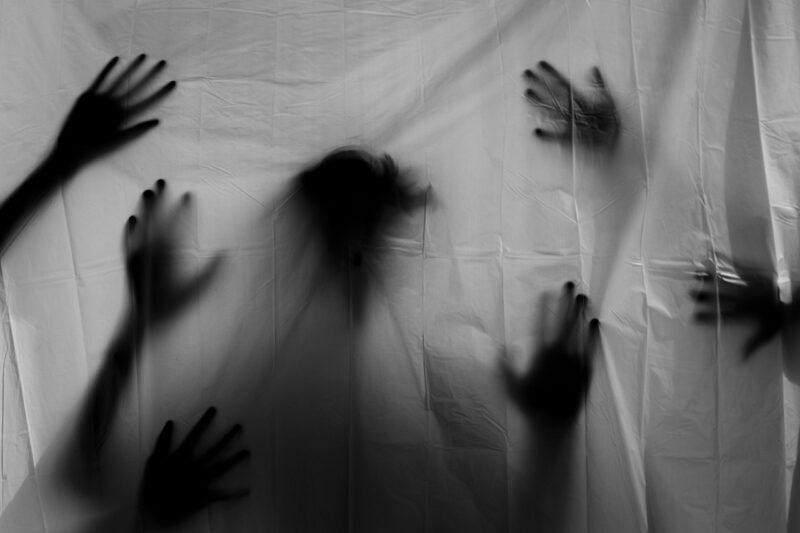How Scary Movies Use Minimalism to Amplify Fear and Create Unforgettable Moments
November 17, 2024

Minimizing the sensory overload in a horror film can often lead to heightened tension and a more profound emotional impact on the audience. In the world of filmmaking, especially in the horror genre, how visuals and soundscapes are constructed plays a critical role in evoking fear and anxiety. Minimalism, specifically, is a powerful tool that directors and cinematographers alike employ to create nightmarish experiences while keeping viewers on the edge of their seats. This article explores how horror films utilize minimalism to amplify fear and craft unforgettable moments.
1. Understanding Minimalism in Horror Films
Minimalism in filmmaking is characterized by simplicity, focusing on essential elements while eliminating the extraneous. In horror films, this often translates into fewer characters, limited settings, and a subdued color palette. The underlying philosophy is to allow space for the audience’s imagination to run wild—often leading to more impactful and personal fears. By stripping down to bare essentials, filmmakers compel viewers to engage more with their own thoughts and feelings.
This technique taps into the primal aspect of fear where what is unseen or unsaid often frightens us more than what is presented physically. Think of minimalistic scenes that only hint at horror rather than explicitly showing it. Such moments can invoke feelings of dread that linger with the audience long after viewing.
2. The Power of Sound Design
In many horror films, directors utilize minimal sound design to create an eerie atmosphere that builds tension. Instead of bombarding the audience with loud effects or music scores, silence or simple, haunting sounds can often communicate acute anxiety. This sonic minimalism, combined with adept editing, allows for an auditory experience that complements the visual elements.
For instance, in films such as ‘A Quiet Place,’ silence becomes a significant aspect of storytelling. The absence of sound creates an environment brimming with suspense. Viewers instinctively lean in, listening closely for unseen threats, amplifying both tension and intrigue.
3. Sparse Set Design: Less is More
The settings in minimalist horror films often feature stark, unembellished environments that contribute to a sense of isolation and vulnerability. A house with empty rooms, dim lighting, and minimal furniture can evoke a feeling of unease, leaving the viewer to focus on what might lurk in the shadows. This technique limits distractions and encourages viewers to fixate on the tension created by the unfamiliarity of the space.
Classic examples include ‘The Babadook’ and ‘Hereditary,’ films that leverage ghostly atmospheres and haunted homes with sparse aesthetics to enhance the story’s emotional depth. The starkness of the environments reflects the characters’ mental states and reveals the isolation they face—making their nightmares resonate more deeply with the audience.
4. The Role of Characterization
Structurally, horror films featuring a minimalistic approach often portray fewer characters, allowing for concentrated character development. By refining the cast, filmmakers create deeper connections between the audience and the characters, making their fears more palpable.
In films like ‘It Follows,’ the protagonist’s struggle becomes not just a fight against a relentless entity, but a reaction to the minimalistic portrayal of relationships and personal fears. When the audience invests emotionally in a few well-developed characters, the fear they face becomes more chilling. Their successes and traumas are experienced vicariously, which exponentially raises the stakes and terror of the story.
5. Imagination as a Tool for Horror
A minimalist approach also cultivates a space for the viewer’s imagination. By showing less, the filmmaker encourages audiences to fill in the blanks—leading to more personalized, sometimes more terrifying, experiences. Our imaginations can conjure fears that are far worse than what’s displayed on screen.
For example, movies like ‘The Witch’ or ‘Midsommar’ induce feelings of dread not merely through shocking images but through unsettling narratives and atmospheres, forcing viewers to confront their own fears and expectations. The terror resides within the unseen and unknown, where minimalist cues guide the viewer towards dark conclusions.
6. Iconic Minimalist Horror Moments
Some of the most memorable scenes in cinematic history stem from minimalism in horror. The simplicity of certain moments, anchored by minimal dialogue or action, can leave audiences profoundly impacted.
- The hallway scene in ‘The Shining’: A long, empty corridor enveloped in silence amplifies the feeling of impending terror as Jack Torrance approaches the camera with a menacing expression.
- The face reveal in ‘Get Out’: A slow zoom in on a character’s expression heightens tension, allowing the audience to comprehend the horror without overwhelming visuals.
- The final scene in ‘The Sixth Sense’: A shocking revelation, paired with minimalistic dialogue, leaves audiences in stunned silence as they piece together the plot’s immense depth.
These moments often linger in the memory, demonstrating the lasting impact of minimalist horror filmmaking.
7. The Future of Minimalism in Horror
As horror continues to evolve, minimalism remains a crucial component. Filmmakers are experimenting with ways to amplify this style, utilizing various media forms—such as VR experiences requiring direct engagement with horror. The minimalist approach is likely to adapt in fascinating ways that challenge traditional narratives while still successfully invoking fear.
Innovations like immersive audio or minimalistic interactive experiences put audiences in the driver’s seat, allowing them to confront their fears directly. This intersection of technology and minimalism presents exciting prospects for how horror can push boundaries in the future.
Conclusion
Minimalism plays a pivotal role in the horror genre, reinforcing the notion that less is often more. By employing minimalism thoughtfully—from sound and set design to character development—filmmakers can effectively amplify emotional impact and enhance audience fears. The resonance of this approach, seen in memorable films and iconic scenes, showcases the enduring power of simplicity in creating chilling and unforgettable cinematic moments.
As cinematic techniques continue to evolve, the minimalist approach promises to remain a vital strategy for eliciting fear, allowing audiences to confront not only what they see on screen but also their own deepest fears.







